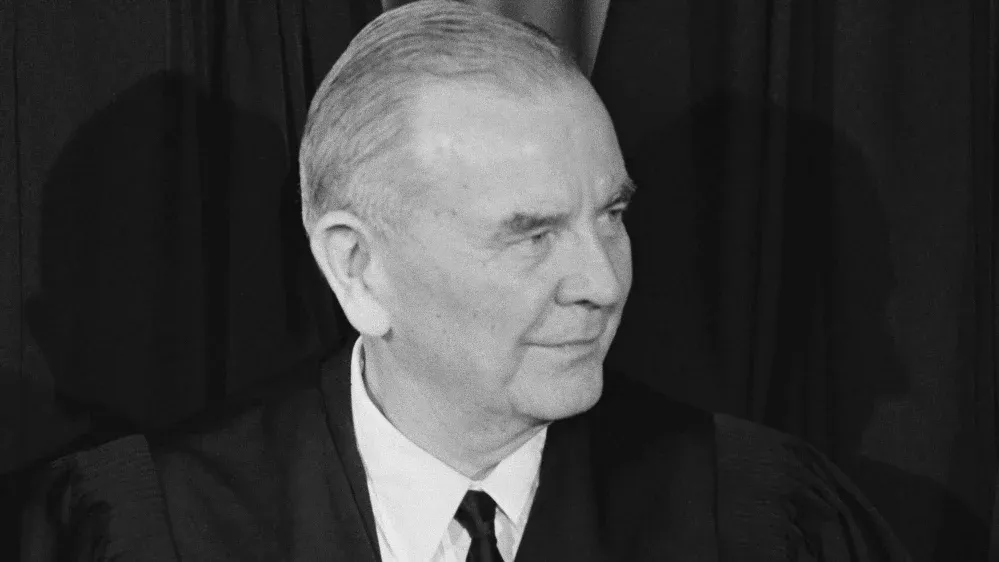Justice William J. Brennan Jr., who served on the United States Supreme Court from 1956 to 1990, remains a towering figure in American jurisprudence. His tenure on the bench was marked by a profound commitment to the protection and expansion of individual rights, which he viewed as essential to the functioning of a democratic society. Brennan's legal philosophy was rooted in the belief that the Constitution is a living document, capable of adapting to the evolving needs of society. This perspective allowed him to champion causes that advanced civil liberties, criminal justice reform, gender equality, and freedom of speech, often in the face of significant opposition.
Brennan's influence on constitutional law is evident in his role in numerous landmark decisions that have left an indelible mark on American society. His opinions reflect a deep-seated belief in human dignity and the potential for law to serve as a catalyst for social progress. As one of the most influential justices in American history, Brennan's legacy continues to inspire those who view legal frameworks as tools for advancing justice and equality.
The Early Years: Establishing A Legacy
In his early years on the Supreme Court, Brennan played pivotal roles in several groundbreaking cases that set important precedents regarding individual rights under the U.S. Constitution. One such case was Baker v. Carr (1962), where he authored the majority opinion establishing the principle of "one person, one vote," thereby ensuring equal representation at state legislative levels. This decision was instrumental in reshaping the political landscape by mandating fairer representation and addressing issues of malapportionment.
Mapp v. Ohio (1960)
The significance of Mapp v. Ohio (1960) lies in its reinforcement of constitutional protections against unreasonable searches and seizures, thereby strengthening individual rights against state encroachments. It marked a pivotal moment in the development of criminal procedure jurisprudence by ensuring that evidence obtained in violation of the Constitution could not be used in any court, thus promoting judicial integrity. This case laid the groundwork for subsequent decisions such as Miranda v. Arizona (1965), which expanded defendants' rights during police interrogations, and Terry v. Ohio (1967), which addressed stop-and-frisk procedures. Together, these cases illustrate the evolving nature of constitutional protections in response to changing societal and legal landscapes.
In its decision, the Supreme Court, by a 6-3 vote, held that the exclusionary rule is applicable to state courts through the Fourteenth Amendment's Due Process Clause. The Court reasoned that the right to privacy and protection from arbitrary governmental intrusions is fundamental to the American justice system and must be enforced uniformly across both federal and state jurisdictions. Justice Tom C. Clark, writing for the majority, emphasized that allowing states to use illegally obtained evidence would erode the constitutional protections guaranteed by the Fourth Amendment. This decision effectively overruled Wolf v. Colorado (1948), which had previously allowed states to decide whether to adopt the exclusionary rule.
The Supreme Court case of Mapp v. Ohio (1960) is a landmark decision that significantly impacted the application of the Fourth Amendment to the states through the doctrine of incorporation. The case arose when police officers in Cleveland, Ohio, forcibly entered Dollree Mapp's home without a proper search warrant, suspecting her of harboring a fugitive. During the search, they found obscene materials, which led to her conviction under Ohio law. Mapp challenged her conviction on the grounds that the evidence was obtained through an illegal search and seizure, thus violating her Fourth Amendment rights. The legal issue at hand was whether the exclusionary rule, which prohibits the use of illegally obtained evidence in federal courts, also applied to state courts.
Civil Liberties & Freedom Of Speech
Brennan’s dedication to civil liberties is perhaps most evident in his First Amendment jurisprudence. He consistently sided with those whose voices were marginalized or suppressed, reinforcing the importance of free expression as a cornerstone of democracy.
New York Times Co. v. United States (1970)
The significance of New York Times Co. v. United States (1970) lies in its affirmation of the principle that prior restraint is a severe infringement on First Amendment rights and is rarely permissible. This case has had a lasting impact on American jurisprudence, serving as a bulwark against government censorship. It has been cited in subsequent cases involving freedom of expression and national security, such as Nebraska Press Assn v. Stuart (1975), which further delineated the boundaries of prior restraint, and Adams v. Florida Power Corp. (2001), where similar issues of national security and press freedom were at play. Additionally, it echoes the sentiments expressed in earlier landmark decisions like Near v. Minnesota Ex Rel Olson (1930), which first articulated the strong presumption against prior restraint. Collectively, these cases underscore the judiciary's role in safeguarding constitutional freedoms against governmental overreach.
The Supreme Court, in a per curiam decision, ruled in favor of the newspapers, emphasizing the heavy presumption against prior restraint. The Court's reasoning was grounded in the principle that a free press is essential to democracy and that the government bears a heavy burden of proof when seeking to justify censorship. The justices were divided in their opinions, but a majority agreed that the government had not met this burden. Justice Black, in his concurring opinion, underscored that the press must be free to expose government deception, while Justice Brennan highlighted that only direct, immediate, and irreparable damage to the nation could justify such restraint. This decision reinforced the robust protection afforded to press freedom under the First Amendment.
The case of New York Times Co. v. United States (1970), commonly referred to as the "Pentagon Papers" case, arose during a tumultuous period in American history marked by the Vietnam War and growing public distrust in government. The legal issue at the heart of this case was whether the United States government could prevent the New York Times and the Washington Post from publishing classified documents pertaining to the Vietnam War, which had been leaked by Daniel Ellsberg. The government argued that publication would cause irreparable harm to national security, invoking the doctrine of prior restraint to justify its position. The newspapers contended that such restraint violated the First Amendment's guarantee of freedom of the press.
Texas v. Johnson (1988)
The significance of Texas v. Johnson (1988) lies in its robust affirmation of free speech principles, even in cases involving highly controversial and emotionally charged forms of expression. This case has had a lasting impact on American jurisprudence by reinforcing the protection of symbolic speech and setting a precedent for future cases involving expressive conduct. Related cases such as United States v. Eichman (1989), which struck down a federal law prohibiting flag desecration, further solidified this doctrine. Additionally, Tinker v. Des Moines Independent Community School Dist (1968) and Cohen v. California (1970) are seminal cases that similarly expanded the scope of protected speech under the First Amendment, illustrating the Court's commitment to safeguarding expressive freedoms against governmental overreach.
In a 5-4 decision, the Supreme Court held that Johnson's act of flag burning constituted expressive conduct protected by the First Amendment. Justice Brennan, writing for the majority, emphasized that the government could not prohibit expression simply because it is offensive or disagreeable. The Court reasoned that the bedrock principle underlying the First Amendment is that the government may not prohibit the expression of an idea simply because society finds the idea itself offensive or disagreeable. This decision underscored the notion that symbolic speech, such as flag burning, is entitled to protection under the First Amendment, provided it does not incite imminent lawless action or pose a direct threat to public safety.
The case of Texas v. Johnson (1988) stands as a pivotal moment in First Amendment jurisprudence, addressing the complex interplay between freedom of expression and societal norms. The case arose when Gregory Lee Johnson burned an American flag outside the 1984 Republican National Convention in Dallas, Texas, as a form of political protest. Johnson was subsequently convicted under a Texas statute that prohibited the desecration of venerated objects, including the American flag. The legal issue at the heart of this case was whether the state's interest in preserving the flag as a symbol of national unity justified a restriction on expressive conduct protected by the First Amendment.
Criminal Justice Reform
Brennan was also instrumental in shaping modern criminal justice reform through his advocacy for fair trial rights and humane treatment of prisoners. His opinions often reflected his belief that the Constitution should be interpreted broadly to ensure justice is served for all citizens, regardless of their social or economic status.
Gideon v. Wainwright (1962)
The significance of Gideon v. Wainwright (1962) cannot be overstated, as it reinforced the principle that justice should not be contingent upon one's financial status. This decision paved the way for subsequent rulings that expanded defendants' rights, such as Miranda v. Arizona (1965), which established the requirement for Miranda warnings, and Argersinger v. Hamlin (1971), which extended the right to counsel to misdemeanor cases where imprisonment could be imposed. The case also underscored the importance of effective legal representation, leading to increased scrutiny of public defender systems and advocacy for reforms to ensure competent legal assistance for all defendants. In this way, Gideon v. Wainwright (1962) has had a profound and lasting impact on American jurisprudence, reinforcing the foundational principle of equal justice under law.
The Supreme Court, in a unanimous decision authored by Justice Hugo Black, overturned Betts v. Brady (1941), holding that the right to counsel is a fundamental right essential to a fair trial. The Court reasoned that the assistance of counsel is necessary to ensure that defendants receive a fair trial and that the adversarial process functions properly. The decision emphasized that the right to counsel is a fundamental safeguard of liberty and justice, integral to the due process guaranteed by the Fourteenth Amendment. This ruling extended the Sixth Amendment's guarantee of counsel to state courts, thereby ensuring that indigent defendants receive legal representation regardless of their ability to pay.
The landmark Supreme Court case Gideon v. Wainwright (1962) fundamentally transformed the landscape of American criminal justice by establishing the right to counsel for defendants in state courts under the Sixth Amendment, as applied to the states through the Fourteenth Amendment. The case arose when Clarence Earl Gideon was charged with a felony in a Florida state court. Lacking the financial means to hire an attorney, Gideon requested that the court appoint one for him. His request was denied based on the prevailing precedent set by Betts v. Brady (1941), which held that the appointment of counsel was not a fundamental right unless special circumstances existed. Gideon represented himself at trial and was subsequently convicted. He appealed his conviction to the Supreme Court, arguing that his Sixth Amendment right to counsel had been violated.
Gender Equality
Brennan’s commitment to equality extended beyond race and class; he played a pivotal role in advancing gender equality through his decisions on the Supreme Court bench. He believed strongly that the Equal Protection Clause of the 14th Amendment applied not just to racial minorities but to women as well, thus paving the way for greater gender parity in law and policy across the nation.
Craig v. Boren (1976)
The significance of Craig v. Boren (1976) lies in its establishment of intermediate scrutiny as the standard for gender discrimination cases, which has had a profound impact on subsequent jurisprudence. This case paved the way for more robust protections against gender discrimination and influenced later decisions such as United States v. Virginia (1995), where the Court struck down the male-only admissions policy of the Virginia Military Institute. Additionally, it set a precedent for cases involving other forms of discrimination, contributing to the evolving landscape of equal protection analysis. Related cases that further developed this doctrine include Frontiero v. Richardson (1972) and Rostker v. Goldberg (1980), which explored the application of intermediate scrutiny in different contexts.
The Court's reasoning in Craig v. Boren (1976) was pivotal in establishing a new standard for evaluating gender discrimination claims. Justice Brennan, writing for the majority, concluded that the statistical evidence presented by Oklahoma was insufficient to justify the gender-based differential treatment. The Court found that the relationship between gender and traffic safety, as argued by the state, was too tenuous to meet the substantial relation requirement under intermediate scrutiny. This decision marked a significant departure from previous cases such as Reed v. Reed (1971), where the Court had applied a rational basis review to gender discrimination claims, thereby elevating the level of scrutiny and protection afforded to gender classifications under the Equal Protection Clause.
The Supreme Court case Craig v. Boren (1976) addressed the constitutionality of gender-based discrimination in statutory law, specifically concerning an Oklahoma statute that allowed women to purchase 3. 2% beer at age 18, while men were required to wait until age 21. The legal issue at the heart of this case was whether such a gender-based distinction violated the Equal Protection Clause of the Fourteenth Amendment. The Court, in a landmark decision, applied an intermediate scrutiny standard for the first time in gender discrimination cases, requiring that classifications by gender must serve important governmental objectives and must be substantially related to the achievement of those objectives.
Conclusion
Justice William J. Brennan Jr.'s legacy is one of unwavering commitment to individual rights and freedom of expression. His opinions have shaped American law in ways that continue to resonate today, from his defense of free speech and press freedoms to his advocacy for equal representation and fair trials.
Brennan's tenure on the Supreme Court was characterized by a deep belief in law's potential as a tool for social progress—often against considerable opposition—making him one of America's most influential justices. His work continues to inspire those who believe in using legal frameworks as instruments for advancing human dignity, justice, and equality.
✨ Enhanced with AI
This article has been rewritten and enhanced using advanced AI technology to demonstrate improved comprehensiveness, accuracy, and analytical depth while maintaining our scholarly standards.
Originally published: 2/5/2024 | Enhanced: 9/5/2025 | Scheduled for republication: 10/16/2025
Stay Ahead with SCOTUS.Etalia.ai
🌟 Discover More with a Subscription 🌟
Experience our enhanced AI-powered legal analysis with SCOTUS.Etalia.ai. Our platform now delivers even more insightful, comprehensive content that demonstrates the latest advances in AI-assisted legal scholarship.








